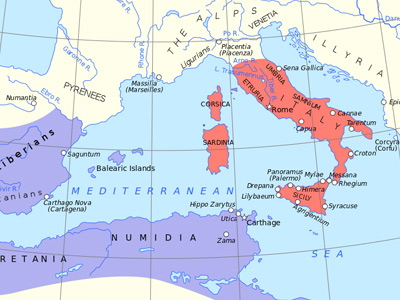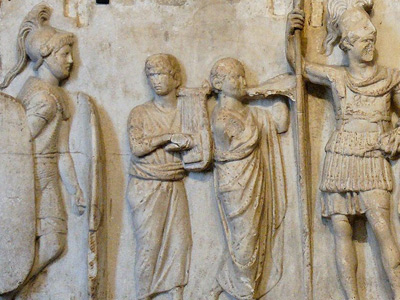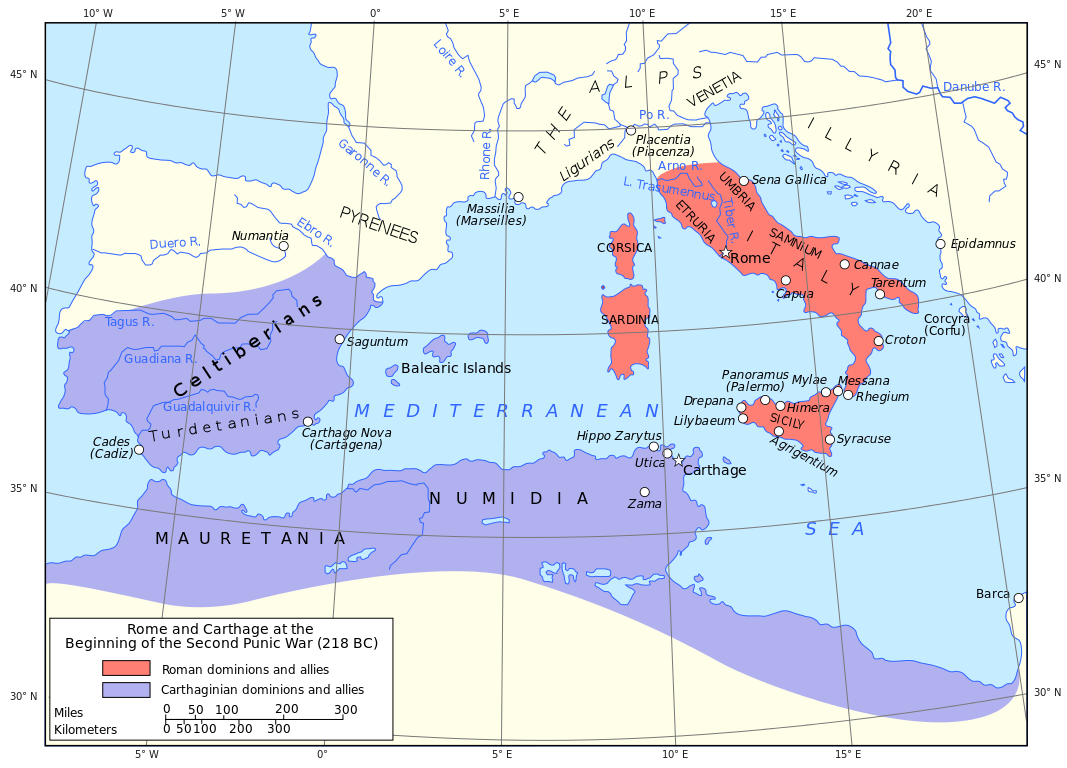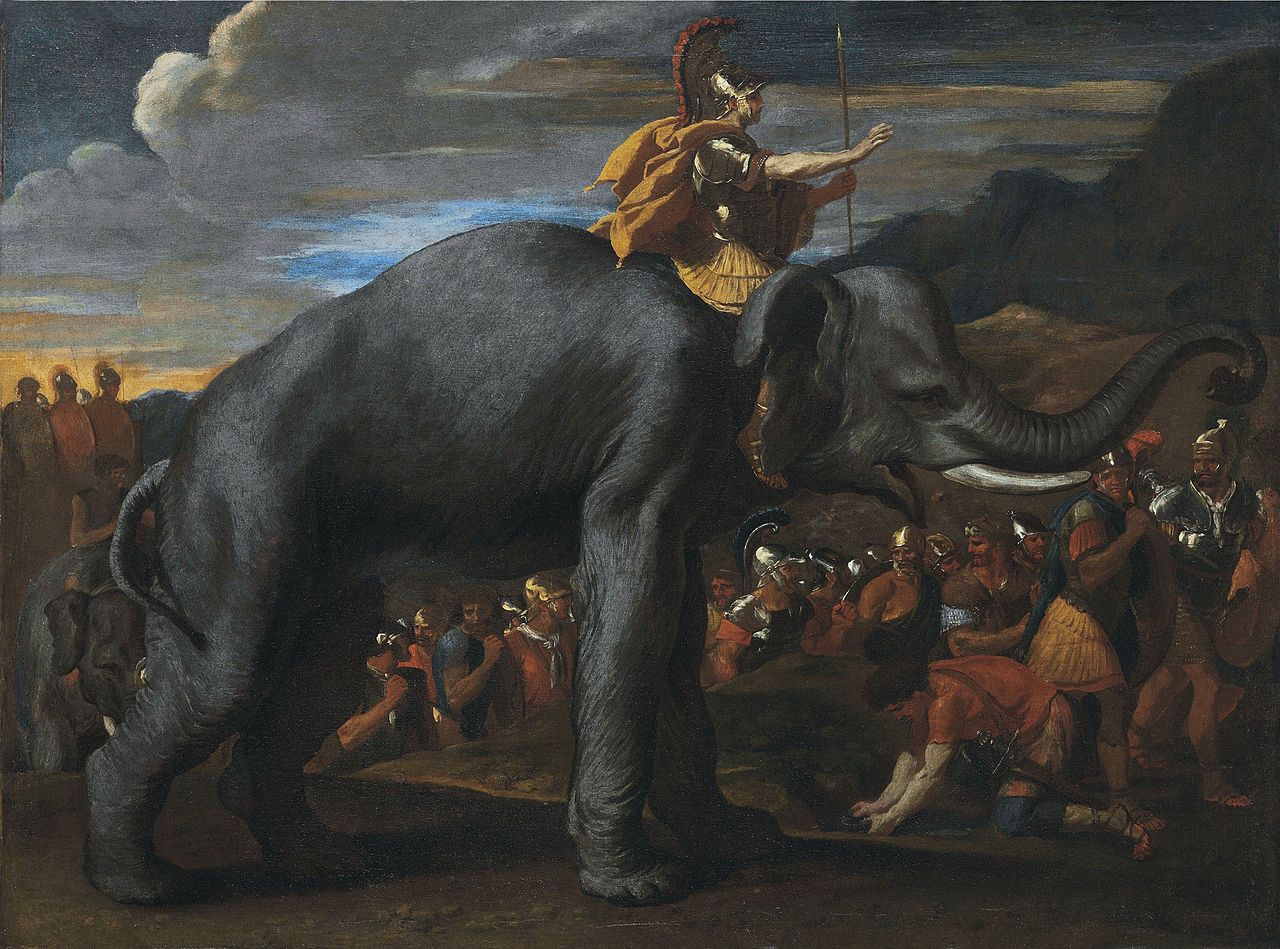Second Punic War (218-201 BC)
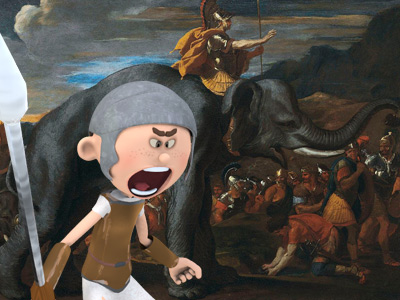
Defeat of the First Expedition
In Iberia, the Scipio brothers hired 20,000 Celtiberian mercenaries to reinforce their army of 30,000 infantry and 3,000 cavalry. Observing that the Carthaginian armies were deployed separately from each other, with Hasdrubal Barca and 15,000 troops near Amtorgis, and Mago Barca and Hasdrubal Gisco, both with 10,000 troops, further to the west of Hasdrubal, the Scipio brothers planned to split their forces. Publius Scipio moved 20,000 Roman and allied soldiers to attack Mago Barca near Castulo, while Gnaeus Scipio took one double legion (10,000 troops) and the mercenaries to attack Hasdrubal Barca. This stratagem resulted in 2 battles, the Battle of Castulo and the Battle of Ilorca, which occurred within a few days of each other, usually combined as the Battle of the Upper Baetis (211 BC). Both battles ended in clear defeats for the Romans as Hasdrubal had bribed the Roman mercenaries to desert and return home without a fight.
As a result of the battle, the Romans The Roman Republic was a form of government of Rome and the era of the classical Roman civilization when it was run through public representation of the Roman people. Beginning with the overthrow of the Roman Kingdom (traditionally dated to 509 BC) and ending in 27 BC with the establishment of the Roman Empire, Rome's control rapidly expanded during this period - from the city's immediate surroundings to hegemony over the entire Mediterranean world. were forced to retreat to their stronghold of Northern Iberia, from which the Carthaginians could not expel them. It is notable that the Roman soldiers decided to elect a new leader, since both commanders had been killed, a practice hitherto known only in Carthagenian or Hellenistic armies.
The Roman Republic was a form of government of Rome and the era of the classical Roman civilization when it was run through public representation of the Roman people. Beginning with the overthrow of the Roman Kingdom (traditionally dated to 509 BC) and ending in 27 BC with the establishment of the Roman Empire, Rome's control rapidly expanded during this period - from the city's immediate surroundings to hegemony over the entire Mediterranean world. were forced to retreat to their stronghold of Northern Iberia, from which the Carthaginians could not expel them. It is notable that the Roman soldiers decided to elect a new leader, since both commanders had been killed, a practice hitherto known only in Carthagenian or Hellenistic armies.
Related Articles
First Punic War (264-241 BC)
The first of three wars fought between Ancient Carthage and the Roman Republic. For more than 20 years, the two powers struggled for supremacy, primarily on the Mediterranean island of Sicily and its surrounding waters, and also in North Africa. View First Punic War (264-241 BC) »
Second Punic War (218-201 BC)
The Second Punic War, also referred to as The Hannibalic War and (by the Romans) the War Against Hannibal, lasted from 218 to 201 BC and involved combatants in the western and eastern Mediterranean. View Second Punic War (218-201 BC) »
Third Punic War (149–146 BC)
Was the third and last of the Punic Wars fought between the former Phoenician colony of Carthage and the Roman Republic. This war was a much smaller engagement than the two previous Punic Wars and focused on Tunisia. View Third Punic War (149–146 BC) »
HISTORY
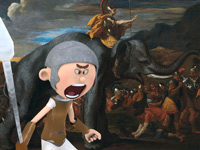
RESOURCES
This article uses material from the Wikipedia article "Second Punic War", which is released under the Creative Commons Attribution-Share-Alike License 3.0.
© Stories Preschool. All Rights Reserved.
